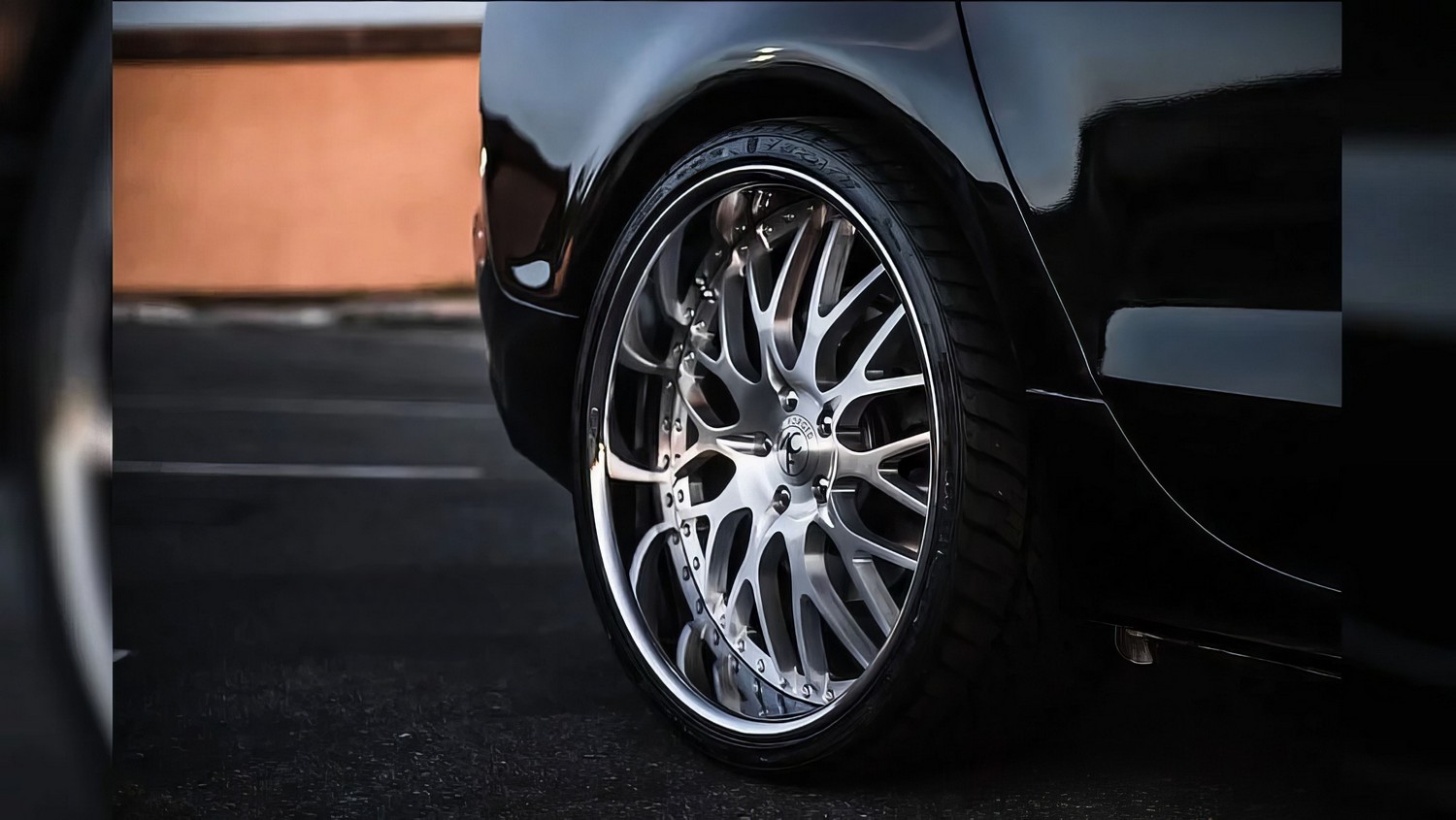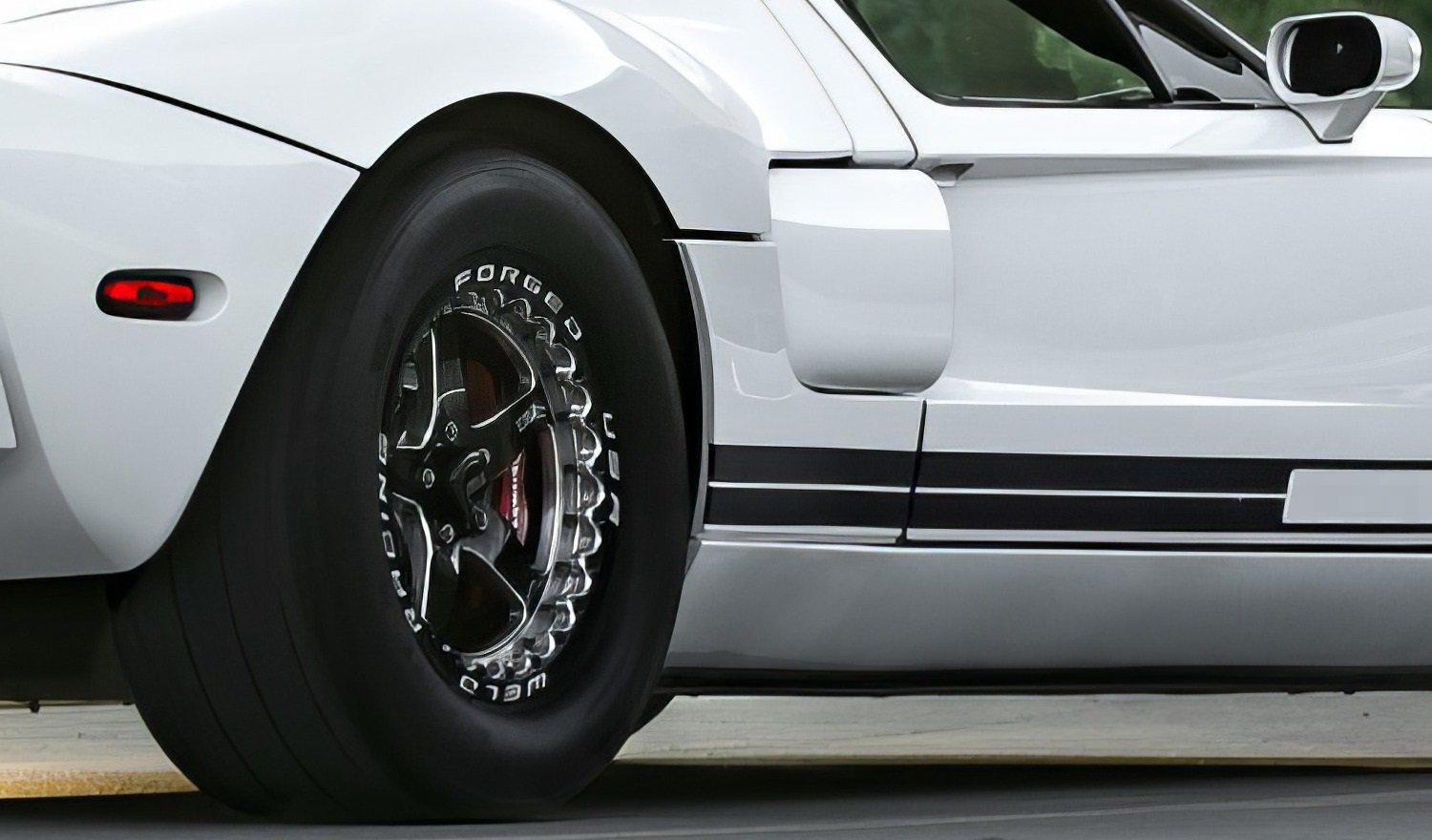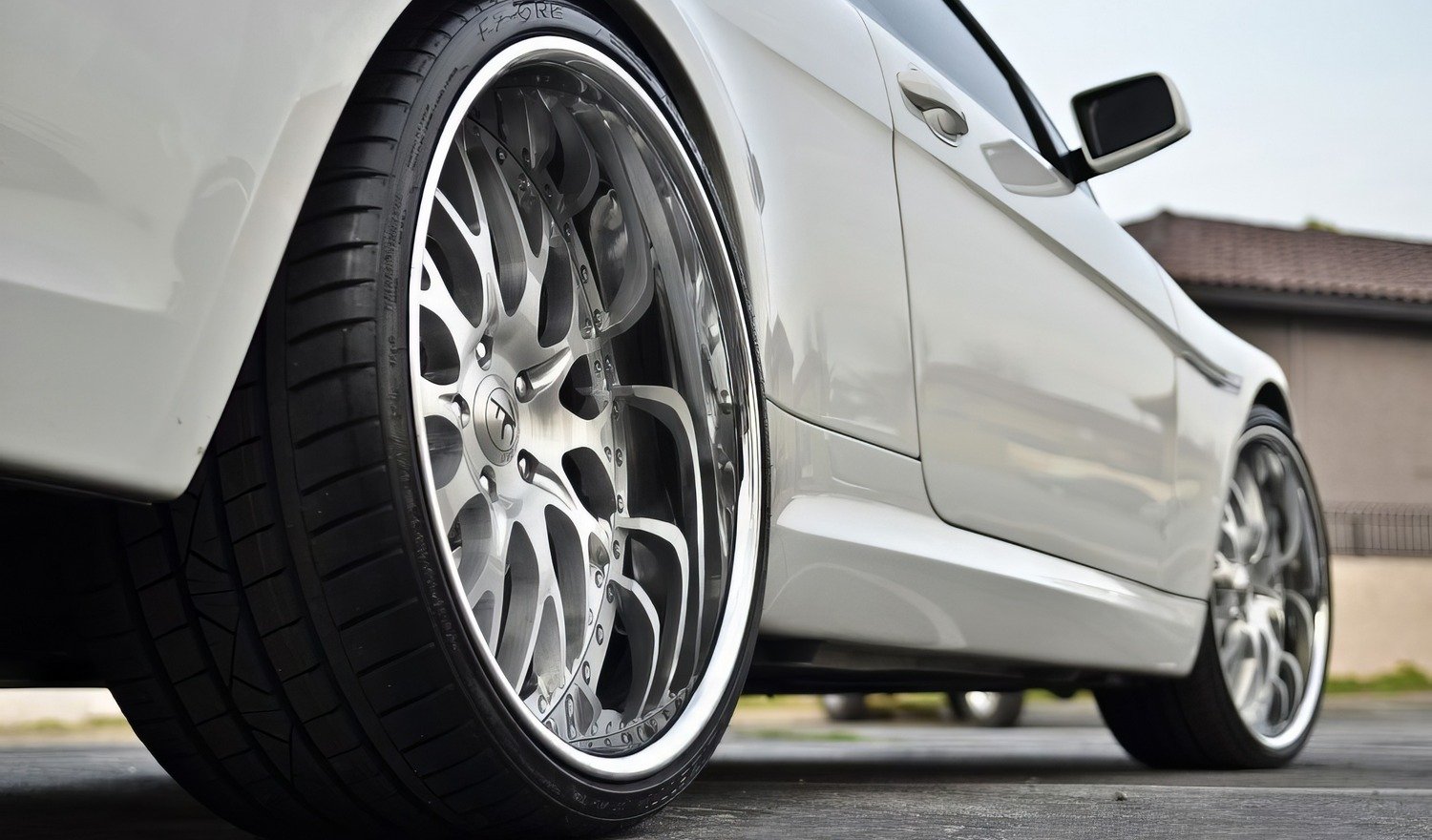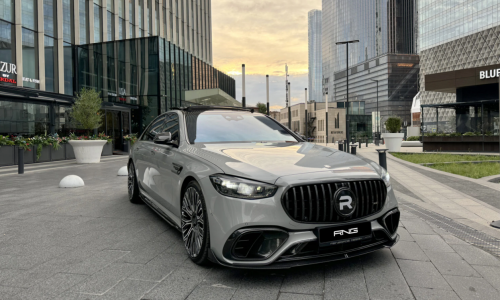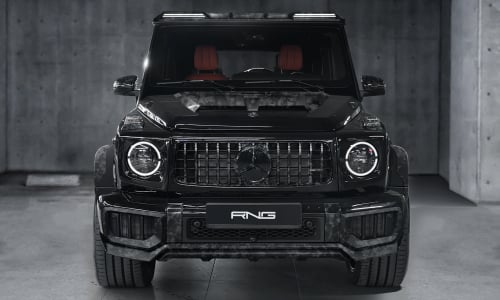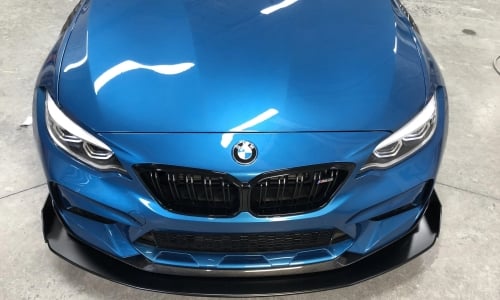Types and markings of forged wheels
Varieties of forged rims
Forged wheels are not for nothing considered the best option for most cars. Forging allows you to get a durable and reliable design, which provides resistance to mechanical and chemical influences (including corrosion), and increased loads during the operation of vehicles. Alloys that are used in the manufacture of forged wheels, significantly reduce the weight of products. For comparison, a steel disk weighs about 9 kg, an aluminum disk — about 7 kg. The specialists of Renegade Design tell us about what varieties of forged wheels exist and how to choose the most suitable variant.
According to the method of production
Conditionally, we can distinguish three main varieties of car wheels — stamped, cast, forged. Although if we talk about the latter, they are not made by forging, but by hot volumetric stamping. Due to the peculiarities of production, their quality is much higher than that of ordinary stamped or cast wheels. The hot metal is subjected to plastic deformation under strong pressure, so its structure becomes very dense and homogeneous, without caverns and voids. In addition, the grains of the material under the same pressure are modified and stretched, taking the form of fibers, which positively affects both the elasticity and strength of products. Forged wheels can be produced in three ways.
- Monoblock stamping. The main equipment is closed dies and a hydraulic press (its capacity varies between 6-20 thousand tons). The prepared raw material is molded in 2-3 steps. The resulting blanks most resemble a pot and have a monolithic structure. The process does not end there, followed by heat treatment and turning. At the milling stage, the design of the finished part is set, after which mounting holes are drilled on it. The finishing touch is cleaning and paint coating.
- Rim rolling. A disk is formed from the workpiece by the same hot stamping method. But instead of further stamping under a hydraulic press, the part is sent to a rolling machine, where it is rolled out a rim of a given size. Then the product is subjected to heat treatment, turning, milling and drilling. At the final stage, the disk is painted.
- Assembly. Unlike the first two varieties, where the body and rim are one whole, prefabricated forged wheels consist of separate parts. Moreover, the body is produced by volumetric hot stamping, and the rim — rolled (the width of the part can be from 6 to 12 inches). All elements undergo the already familiar to us thermal and mechanical treatment, are coated with paint, dried and only then connected with bolts.
The most reliable are monoblock forged wheels, prefabricated — significantly expand the design possibilities of wheels, but are inferior in strength. Unscrupulous manufacturers may try to pass off cast discs with rolled rims forged, but they are given away by the low weight, because in their manufacture are used casting groups of aluminum alloys, such as, for example, AlSi11.
Material:
Steel, titanium and various alloys can be used as the material for car rims. For forged rims, aluminum and magnesium alloys are most commonly used. Both have advantages and disadvantages.
- Aluminum alloys. In addition to, actually, aluminum, the composition includes silicon, magnesium and other additives that allow you to give the material certain properties. The main advantages of aluminum alloys — light weight, aesthetics, resistance to corrosion, good performance properties and affordable price.
- Magnesium alloys. The most common is the magnesium casting alloy ML5. Discs made of it weigh one and a half times less than their aluminum counterparts. The specific structure of the material has a positive effect on the elasticity and vibration stability of products. High thermal conductivity allows redistributing the temperature from heated brake wheels or hubs, extending their service life. Significant disadvantages of magnesium alloys are sensitivity to chemical influences (including corrosive processes) and low impact resistance. In the realities of Russian roads, with plenty of pits, cracks and protrusions, magnesium wheels quickly fail.
If you compare the technical characteristics of forged aluminum and magnesium wheels, they do not differ much, except for the weight. From the point of view of operation, aluminum products look more attractive, as they cost much cheaper and at the same time can serve for quite a long time, while magnesium ones are more capricious and short-lived.
Wheel varieties by color and design
The design and specificity of the operating conditions of wheels somewhat limits the possibilities of design, but even in this case there are quite a few options to decorate the wheel. By color and design, the following varieties of forged wheels can be distinguished:
- Painted. Monocolor, two or three contrasting colors are possible.
- With original spokes. Such a solution will definitely attract additional attention to the wheels.
- With engraving. Allows you to put any graphic image or inscription on the surface of the disk and cover.
- With mirror polishing. Not the most practical, but certainly a spectacular approach to the design of wheels.
- Anodized. It is not necessary to leave the surface of wheels with a native coating. You can always use the achievements of electroplating.
If there are no interesting wheels or you want something unique, you can order an individual design on your own project or use the services of a professional designer. It will cost, of course, more expensive, but the result will be impressive.
Marking of forged wheels: basic parameters
Car wheels have a rich marking, which is due to the need to specify a large amount of data necessary for the correct choice of the product. The standard scheme may look as follows: 6,5JxR15 ET33 4*98 D58.1. Let’s consider each designation in detail.
- The width of the rim expresses the distance between its inner edges, in this case — 6.5 inches. Most often used wheels with a rim width of 3.5 to 7 inches. Sport models and SUVs can be equipped with wider rims.
- The type of rim flange where the rim connects to the tire. It is denoted by letters J, JJ, JK, K, B, D, P. Each letter denotes a specific set of parameters — radius of curvature, profile contour, angle and height of the shelves, etc. When choosing, you should be guided by the recommendations of the car manufacturer.
- Rim connector. It is denoted by the symbols «x» or «-«. The first indicates a non-separable, monolithic design, the second — a collapsible one. wheels with the marking «x» are used for cars and light trucks, as they allow the installation of elastic, soft tires.
- Mounting diameter is denoted by the letter R (from Rim Diameter) and indicates the size of the landing rim under the tire. It is measured in inches. Typically, mounting rims from R13 to R21 are used.
- Humps (ring protrusions) are necessary to secure the tire to the rim and to prevent air from escaping when the tire is externally exposed. H2 means that the hubs are on both sides of the disk. Other variants are H for single undercarriage, FH for flat undercarriage, AH for asymmetrically shaped ring hump, which is the most reliable, and X for truncated undercarriage.
- Disc Outreach (Einpress Tief or ET). The distance between the plane of contact between the disc and the hub and the plane passing through the center of the cross-section of the disc. It is specified in millimeters. For example, ET33 means negative, ET45 means positive, ET0 means zero.
- Clearance (PCD). The number of mounting holes and the diameter of their placement. PCD 4*98 — 4 holes with a diameter of 98 mm.
- Diameter of the disk fit (diameter of the center hole) — D58.1. Must correspond to the diameter of the cylinder seat on the car hub. The hole allows the wheel to be centered and facilitates bolt installation.
Additional markings
In addition, other information may be indicated on the wheels. Additional markings include:
- Maximum load on the disk (MAX LOAD). This is usually stated in pounds, e.g. 2000LB (908 kg).
- Pressure inside the tire (MAX PSI). This parameter is often expressed using the word COLD — MAX PSI 50 COLD. The pressure should not be greater than 50 psi, and should be measured in a cold (cooled) tire.
- Method of manufacture. Forged rims are labeled with the word FORGED.
- Tire Fixation Simulator. In the past, some tires used to be equipped with a tire locking system that was labeled BEADLOCK. But then, for safety reasons, this technology was banned. BEADLOCK SIMULATOR means that it is not different from traditional rims and can be used everywhere.
- Compliance with international standards. This is indicated by the stamps of controlling bodies — ISO, SAE, PCT, TUV, etc. On Russian products, GOST or TU are indicated.
- Date of manufacture. Usually indicated in the format week/year — 0423, the product was released in the 4th week of 2023.
- Country of manufacture. The marking may look like the full name of the country or the manufacturer’s logo, without indicating the territory where the product was manufactured.
- Markings are usually located on the inside of the disk, the sequence and location may vary depending on the manufacturer.
But the content remains unchanged, as any labeling must be carried out in accordance with the requirements of certification, which is valid in the EU and Russia. In addition, labeling is necessarily duplicated on the packaging itself and in the accompanying document.
How to choose the right forged rims
When selecting forged car rims, it is necessary to take into account such parameters as the diameter and width of the disk, the number of mounting holes and their location, the size of the wheel hub and the wheel offset. These data can be seen in the marking of products or look in specialized catalogs for the selection of wheels and tires. Installation dimensions can also be obtained by directly measuring the disk. The basic selection criteria are as follows:
- The diameter of the disk must correspond to the tire mounting size. Usually the car manufacturers themselves regulate the range of permissible diameter. But no one forbids you to convert the car to a larger format. Say, if the standard 15-inch wheels are installed, then you can choose products with a diameter of 16 to 19 inches.
- Rim width. With a mounting diameter of up to 14 inches, it is allowed to deviate the size by 0.5-1 inch, with a diameter of 15 or more — 1-1.5 inches. Too wide or too narrow will result in poor ride characteristics, reducing lateral stiffness, roll resistance and cornering response. A simple formula can be used to make the best choice:
Rim width = Tire tread width — 20%
For example, you need to find the rim width for a 195/65R15 tire. The first number indicates the tire tread width in millimeters, and the diameter of the disk is specified in inches, so the calculation will look like this:
195 mm — 20% = 156 mm
156 mm / 25.4 mm = 6.1 inches.
Rounded to a whole number — 6, this is the desired rim diameter for a tire 195/65R15. The method is inaccurate, but allows you to find a more or less suitable disk, when there is no opportunity to look in the catalog.
- Diameter of the circumference with mounting holes (PCD). Here, errors are inadmissible, because the safety of the driver and passengers depends on the reliability of disk fastening. The mounting will turn out to be either skewed or under-tightened, the wheel will not sit completely on the hub. Loosely tightened nuts may simply unscrew on the move. The specifics of tightening the bolts — on a cone, sphere or plane — also matter.
- Wheel reach. The smaller this parameter, the stronger the disk will protrude beyond the wheel well. And vice versa, the greater the reach of the disk, the deeper it enters the niche. Many drivers still prefer the first option. It is acceptable to reduce the offset by 5-8 mm from the recommended by the catalog.
- Maximum load of the disk. To calculate this parameter, it is necessary to divide 60% of the tonnage of the car in two. Specific figures can always be found at disk manufacturers or car dealers. Forged wheels are characterized by good strength characteristics, so they can withstand increased loads.
The company Renegade Design, specializing in the manufacture and installation of premium car dodgers, offers original models of forged rims. Actual design and a wide range of colors allows you to choose products for every taste, to create an image in the style of respectable classics, brutal hardcore, dynamic techno, elegant minimalism, etc.
